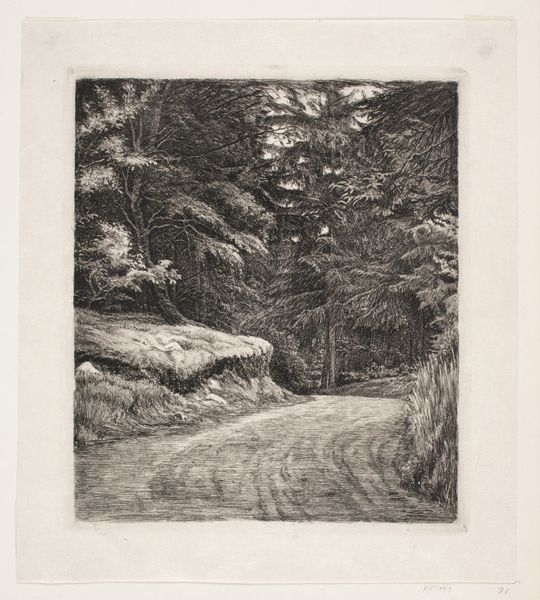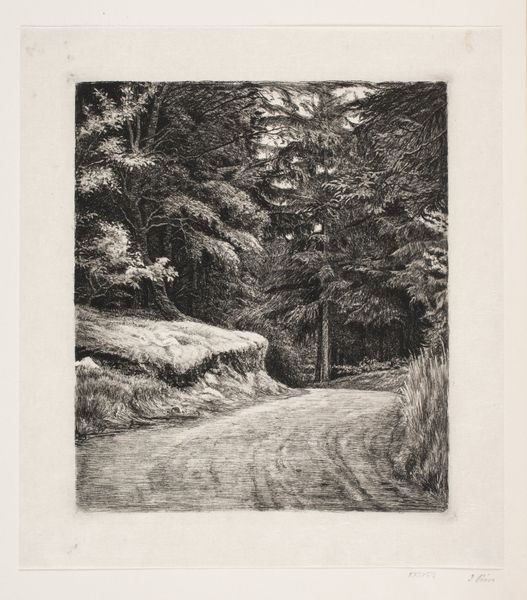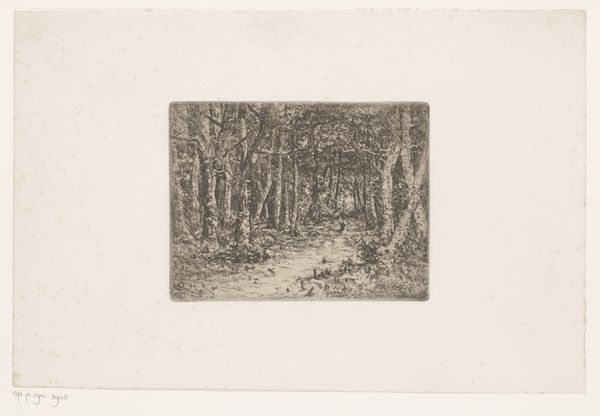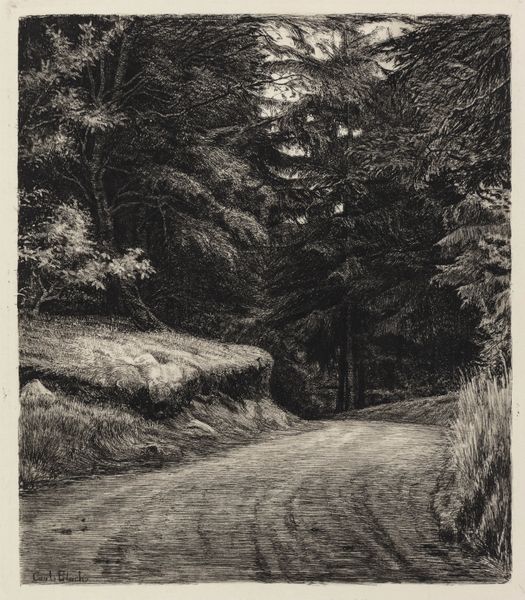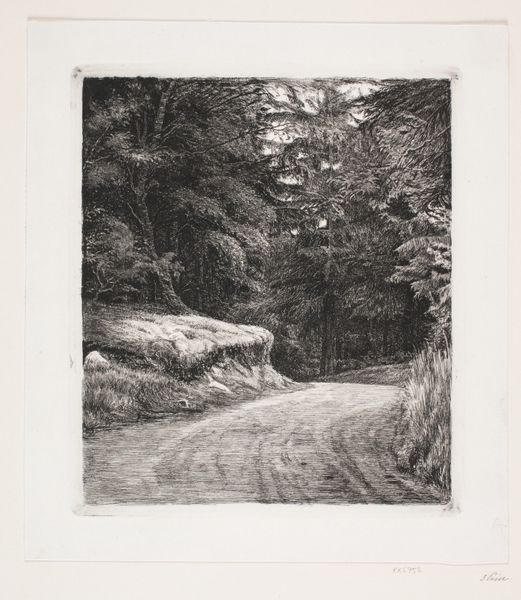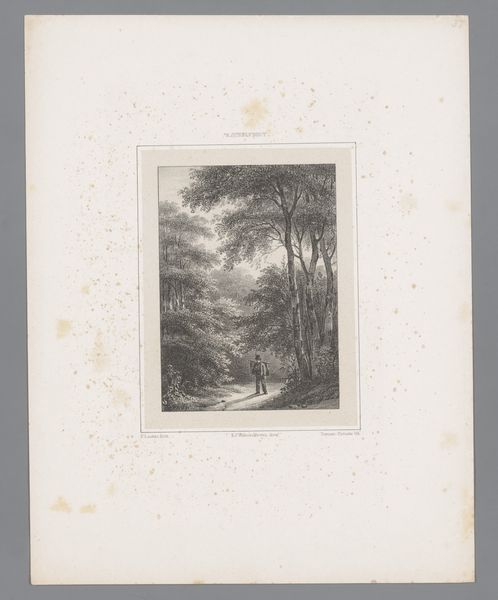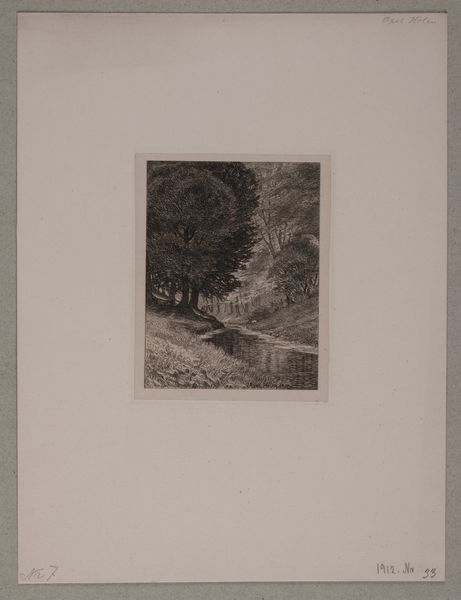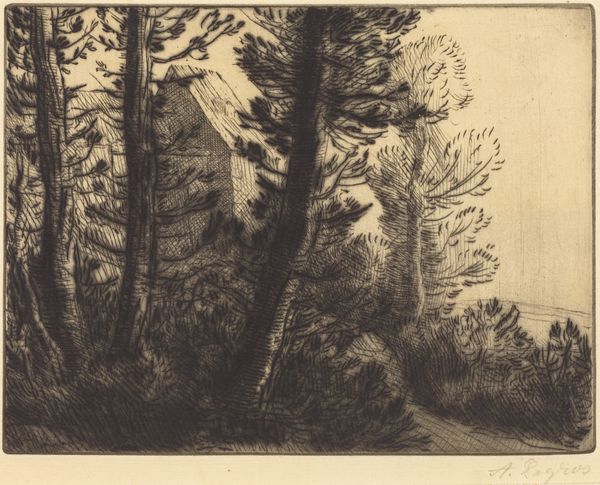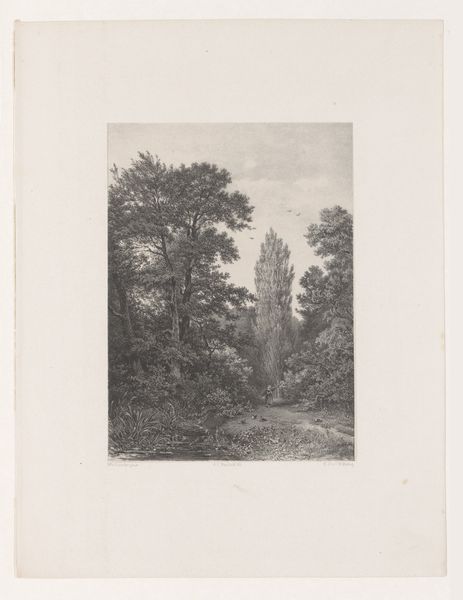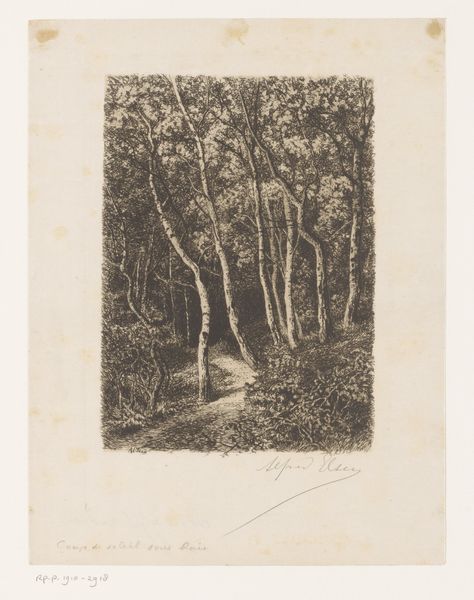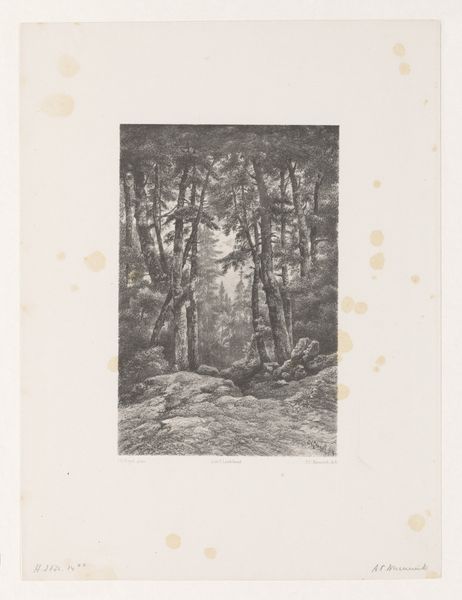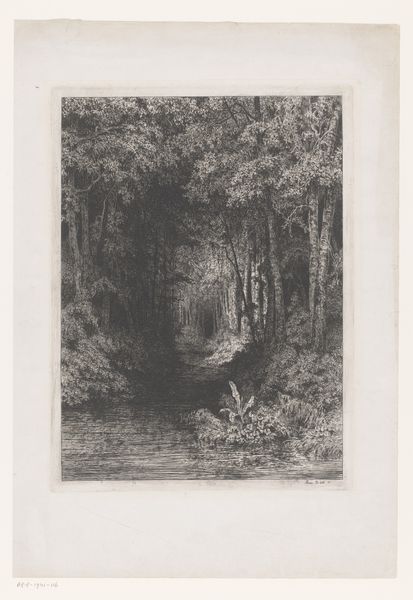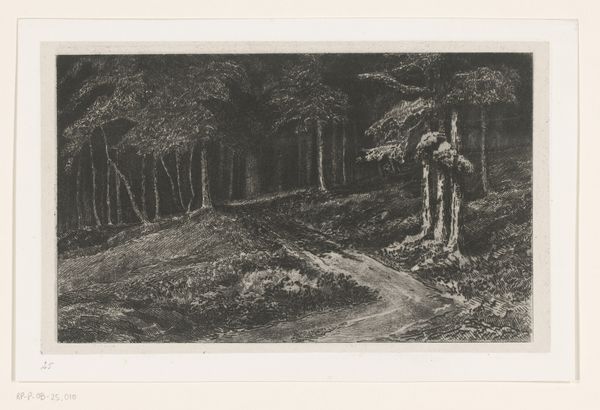
Dimensions: height 205 mm, width 178 mm
Copyright: Rijks Museum: Open Domain
Carl Bloch made this print, "Bosweg", using etching, sometime between 1847 and 1890. Etching is an indirect process. The artist covers a metal plate with a waxy, acid-resistant ground, then scratches an image into that surface with a needle. When the plate is dipped in acid, the exposed lines are eaten away. The longer the plate sits in the acid, the deeper the lines become, and the darker they will appear when printed. This process is repeated, to achieve a range of tones. Consider the labor involved in the making of this print: the skilled work of the artist, of course, but also the extraction of the metal used for the plate, the making of the acid, and the production of the paper. Looking closely at the lines of the etching, we can appreciate the amount of work involved in producing this image of a woodland path. By attending to these aspects of making, we can more fully understand the value and meaning of this beautiful work.
Comments
No comments
Be the first to comment and join the conversation on the ultimate creative platform.
